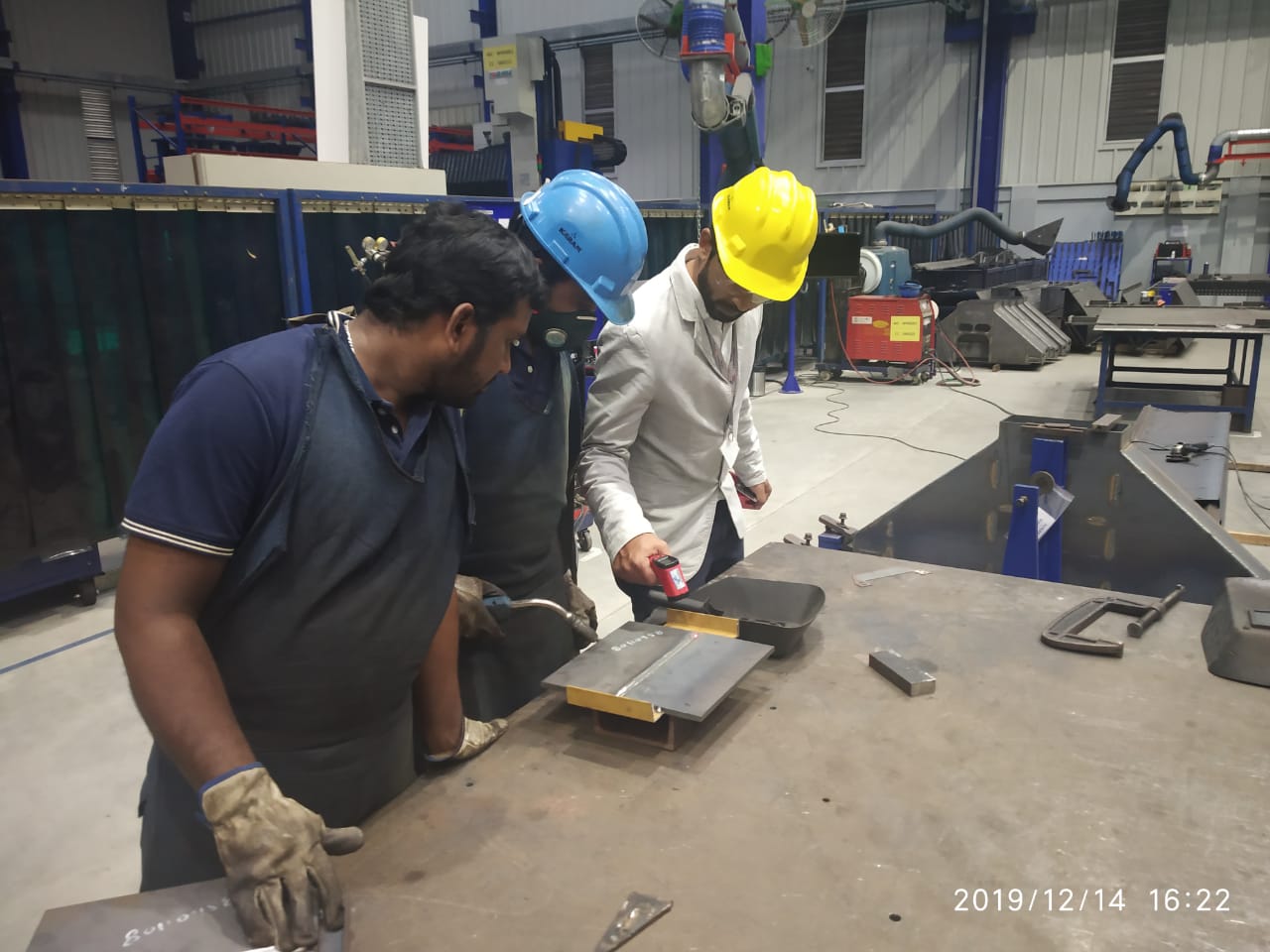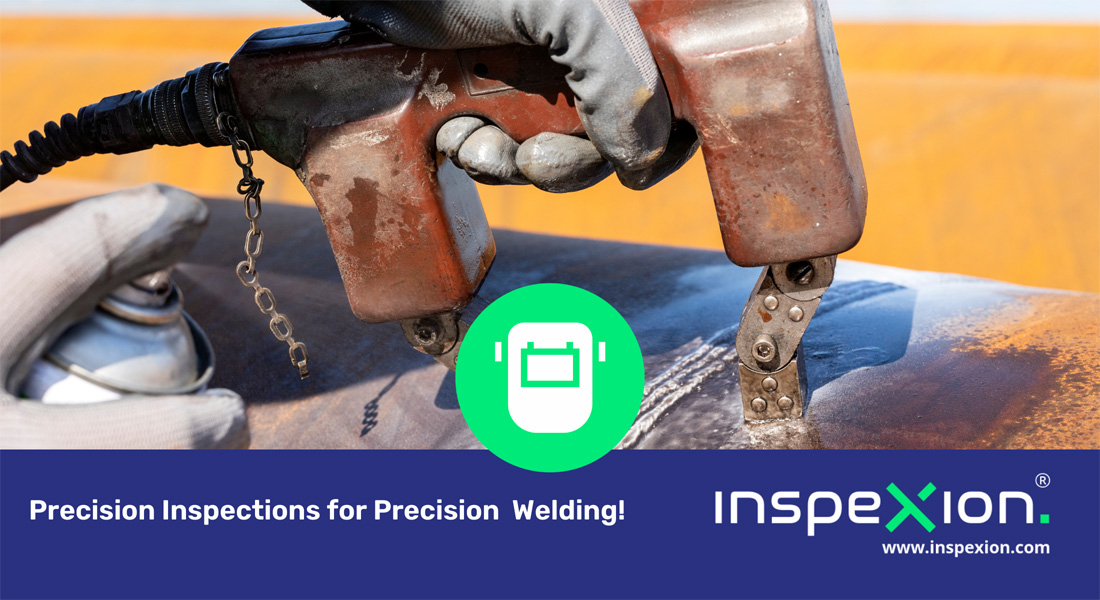Checking Out Advanced Tools and Methods for Accurate Welding Evaluation
In the realm of welding assessment, the pursuit of precision and integrity is extremely important, stimulating the development of sophisticated tools and methodologies. Laser scanning technologies and computerized inspection systems, outfitted with synthetic intelligence, are redefining the landscape by reducing human error and boosting security steps.
Ultrasonic Examining Developments
Ultrasonic testing technologies frequently stand for the center of improvements in welding inspection innovations. These innovations have dramatically enhanced the capability to detect and evaluate stoppages within welded structures, making certain improved stability and security - Welding Inspection Madison. Ultrasonic testing utilizes high-frequency acoustic waves to pass through materials, giving comprehensive info concerning internal functions without triggering damages. The most recent advancements in this area have actually concentrated on increasing accuracy, rate, and the capacity to interpret intricate data.

Furthermore, improvements in software application algorithms for data evaluation have boosted the accuracy of flaw discovery and sizing. Automated ultrasonic testing systems currently offer high-resolution imaging, allowing detailed evaluations of weld quality. These systems are often incorporated with sophisticated visualization devices, which facilitate the interpretation of outcomes.
Radiographic Inspection Methods
While ultrasonic screening innovations have established a high standard in non-destructive assessment, radiographic inspection methods remain to play an essential role in welding assessment by supplying unique understandings right into material integrity. Radiographic testing (RT) uses making use of X-rays or gamma rays to pass through products, producing a radiograph that visually represents the inner framework of a weld. This imaging capacity is vital for detecting subsurface problems such as porosity, incorporations, and cracks that may not be noticeable through surface evaluations.
The process entails placing a radiation source on one side of the weld and a detector on the opposite side. Variations in material thickness and density affect the attenuation of the rays, creating a contrasting picture that exactly defines imperfections. RT is specifically beneficial for inspecting thick areas and complicated geometries where various other approaches might fall short.
Despite its effectiveness, radiographic evaluation should be carried out with stringent adherence to security protocols as a result of the harmful nature of ionizing radiation. The analysis of radiographs requires experienced employees, as the high quality of the analysis straight affects the reliability of the inspection. Subsequently, recurring innovations in digital radiography are improving picture quality and analysis performance, enhancing RT's important function in ensuring weld top quality.
Laser Scanning Breakthroughs
Embracing laser scanning innovation in welding assessment has changed the analysis of weld high quality and stability. This advanced technique supplies a non-contact, high-resolution means of recording in-depth 3D information of weld surfaces. Unlike typical inspection techniques, laser scanning gives quick data procurement, dramatically enhancing the efficiency and precision of weld assessments. The modern technology employs laser beam of lights to create precise 3D designs, which are crucial for extensive evaluation of weld measurements, surface area abnormalities, and potential problems.
Laser scanning developments have actually caused considerable enhancements in detecting and characterizing surface flaws such as porosity, lack of blend, and undercuts. The high-resolution information allows examiners to perform thorough evaluations, making certain that welds fulfill rigorous market standards. Additionally, this method sustains the growth of digital records, facilitating long-term quality control and traceability.
Additionally, laser scanning modern technology integrates seamlessly with software services developed for automated issue detection and analysis. The resultant data can be easily shared and assessed, advertising collective decision-making procedures. As markets continue to require greater requirements for weld quality, laser scanning stays at the leading edge, offering unparalleled accuracy and efficiency in welding inspection.
Automated Assessment Systems

Automated assessment systems provide the advantage of consistency, removing human mistake and subjectivity from the evaluation process. They are developed to operate in numerous settings, from manufacturing floorings to remote area sites, making look at this now sure thorough protection. Welding Inspection Madison. These systems can be programmed to stick to certain welding requirements and criteria, giving thorough records and documentation for quality assurance purposes
Additionally, the combination of cloud-based platforms assists in the storage and analysis of vast amounts of inspection data. This enables fad analysis and predictive upkeep, allowing makers to deal with potential issues before they escalate. The fostering of automatic examination systems is a critical action towards boosting the integrity and efficiency of welding processes in commercial applications.

Enhancing Security and Performance
A significant aspect of enhancing safety and performance in welding examination depends on the assimilation of cutting-edge technologies that streamline operations and alleviate dangers. The fostering of innovative non-destructive screening (NDT) techniques, such as ultrasonic testing, phased variety ultrasonic screening (PAUT), and radiographic testing, plays a pivotal role in guaranteeing Website structural integrity without compromising the safety and security of the employees entailed. These methods enable for extensive assessments with very little downtime, minimizing prospective hazards connected with typical approaches.
Moreover, the implementation of real-time information analytics and equipment understanding formulas has changed the method evaluation information is translated. By employing anticipating analytics, prospective problems can be identified before they show up into vital failures, guaranteeing timely treatments and upkeep. This positive approach considerably enhances functional effectiveness and safety and security in welding processes.
Moreover, remote inspection innovations, consisting of drones and robot crawlers equipped with high-resolution cameras, make it possible for examiners to analyze hard-to-reach areas without subjecting them to dangerous problems. This not only improves assessment precision however additionally minimizes human risk. By leveraging these innovative tools and techniques, sectors can attain higher security criteria and operational effectiveness, inevitably leading to more lasting and trustworthy welding evaluation methods.
Final Thought
The combination of innovative tools and methods in welding inspection substantially improves defect detection and guarantees structural integrity. Welding Inspection Madison. Developments such as phased variety ultrasonic screening, digital radiography, and laser scanning boost defect characterization, while automated evaluation systems and AI decrease human mistake. Remote technologies help with risk-free assessments in dangerous environments, advertising an aggressive upkeep technique. These improvements not only boost assessment effectiveness however also add to enhanced safety and quality assurance in industrial welding applications.

Ultrasonic screening advancements frequently stand for the center of advancements in welding inspection modern technologies.While ultrasonic testing technologies have set a high requirement in non-destructive exam, radiographic examination strategies continue to play an essential role in welding assessment by offering one-of-a-kind insights into material stability.Embracing laser scanning innovation in welding assessment has actually transformed the evaluation of weld top quality and stability. As markets proceed to demand greater criteria for weld quality, laser scanning stays at the leading edge, offering unmatched precision and efficiency in welding examination.
Automated assessment systems offer the advantage of uniformity, eliminating human error and subjectivity from click to find out more the inspection procedure.